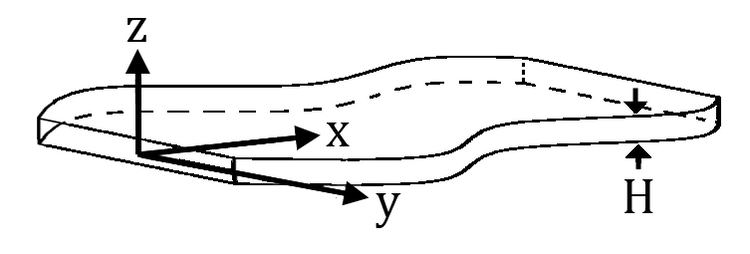 | ||
Hele-Shaw flow (named after Henry Selby Hele-Shaw) is defined as Stokes flow between two parallel flat plates separated by an infinitesimally small gap. Various problems in fluid mechanics can be approximated to Hele-Shaw flows and thus the research of these flows is of importance. Approximation to Hele-Shaw flow is specifically important to micro-flows. This is due to manufacturing techniques, which creates shallow planar configurations, and the typically low Reynolds numbers of micro-flows.
Contents
The governing equation of Hele-Shaw flows is identical to that of the inviscid potential flow and to the flow of fluid through a porous medium (Darcy's law). It thus permits visualization of this kind of flow in two dimensions.
Mathematical formulation of Hele-Shaw flows
Let
the velocity profile in the
where
This relation and the uniformity of the pressure in the narrow direction
This equation is supplemented by the no-penetration boundary conditions on the side walls of the geometry,
where
Hele-Shaw cell
The term Hele-Shaw cell is commonly used for cases in which a fluid is injected into the shallow geometry from above or below the geometry, and when the fluid is bounded by another liquid or gas. For such flows the boundary conditions are defined by pressures and surface tensions.
